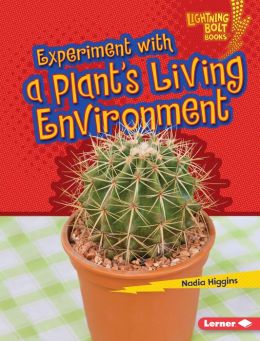Have I mentioned that I go a little nutso with planting in the Spring? I have? Oh, okay. Well, then.
As I may or may not have mentioned, I find it hard to wait until it is safe to plant things outside, and I don't have much room to plant inside. There are also those pesky little things called kids and cats, which make the life expectancy of any sort of houseplant rather short.
Fortunately, there is also this little thing called work, which has (besides books) many high flat surfaces and a whole lot of natural lighting. When I started here ten years ago, I had one philodendron, one spider plant, and I inherited a large aloe. Now, the room looks like this (if you are standing on a chair, which I will ask you to please not do if I see you, so please don't):
Yes, I see that dead leaf, I'll get it in a minute. The point is, I DO have a place to satisfy my need for green, and to maybe play around a bit in the dirt. Or, to experiment, even:


9781467757331 9781467757317
There are four other titles in this series. You can also experiment with a Plant's Roots, Photosynthesis, Pollination, and What a Plant Needs to Grow. I would be interested in seeing if there is any repetition of activities - for example, between the Roots and the Parts of a Plant titles, or the Living Environment and Needs to Grow - has anyone seen those titles together?
In general, I love the quality of Lerner's binding, their illustrations are always clear and colorful, and any time I can add simple but accurate science books to the junior reader section, I am happy!
As for specifics: Parts of a Plant begins by describing the six main parts of a plant, but then acknowledges that not all plants have those parts (mosses, for example, don't have flowers or seeds). Bravo, already doing better than the textbook I had when I was teaching second grade! The first experiment involves finding out how much water a plant takes in through its roots, suggesting that you use crab grass. I wish I had known - I just spent three days pulling crab grass out of the children's garden outside. I'm sure it will be back - if anyone would like to try this experiment, help yourself!
I wondered if they would account for evaporation, and they did - I would have used a control glass, however, which could provide a whole extra lesson, and they didn't spend any time explaining why you have to rule out other factors, but - again, simple is the key. Other experiments include the good old colored carnations, transpiration (plant sweat), and seed transportation (I would have liked to see other options used here, as well). Fun facts, glossary, further reading, and an index round out the end of the book (with a table of contents at the beginning) - I appreciate Lerner treating young readers like 'big kids' in this regard, letting parents/teachers get them used to using such at an early age.
A Plant's Living Environment covers temperature, worms, pollution, and water storage. Any of these simple experiments would be great for a first science fair, and we do plan on getting the rest of the books as soon as we have the funds. All in all, a great addition for school or classroom libraries, or for any kids who like to explore and find out "why"!

No comments:
Post a Comment